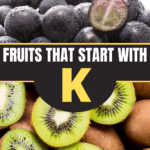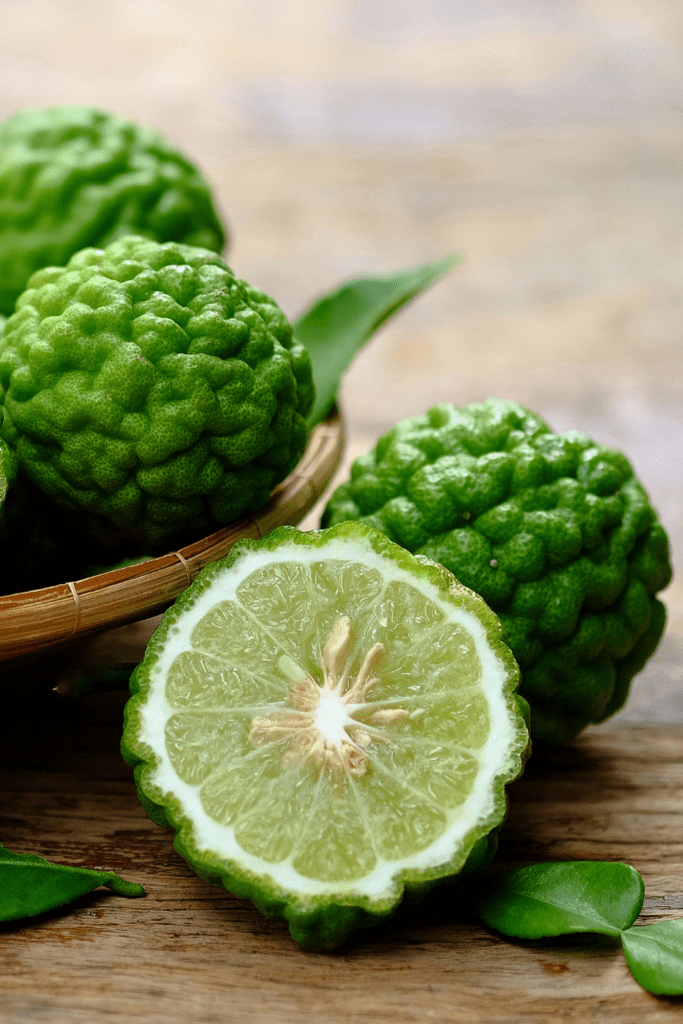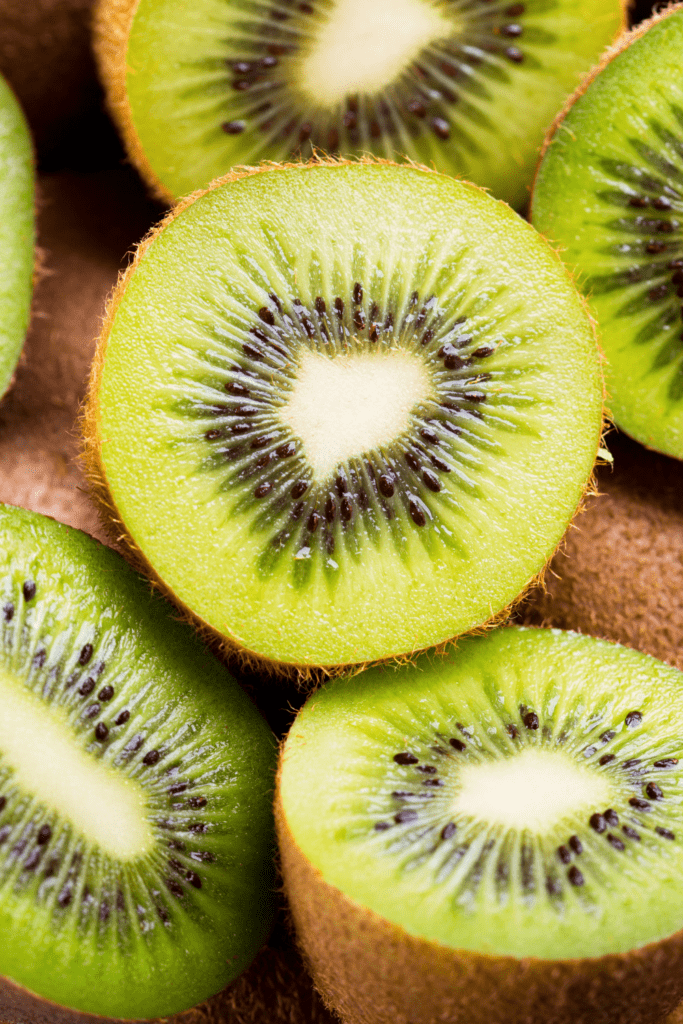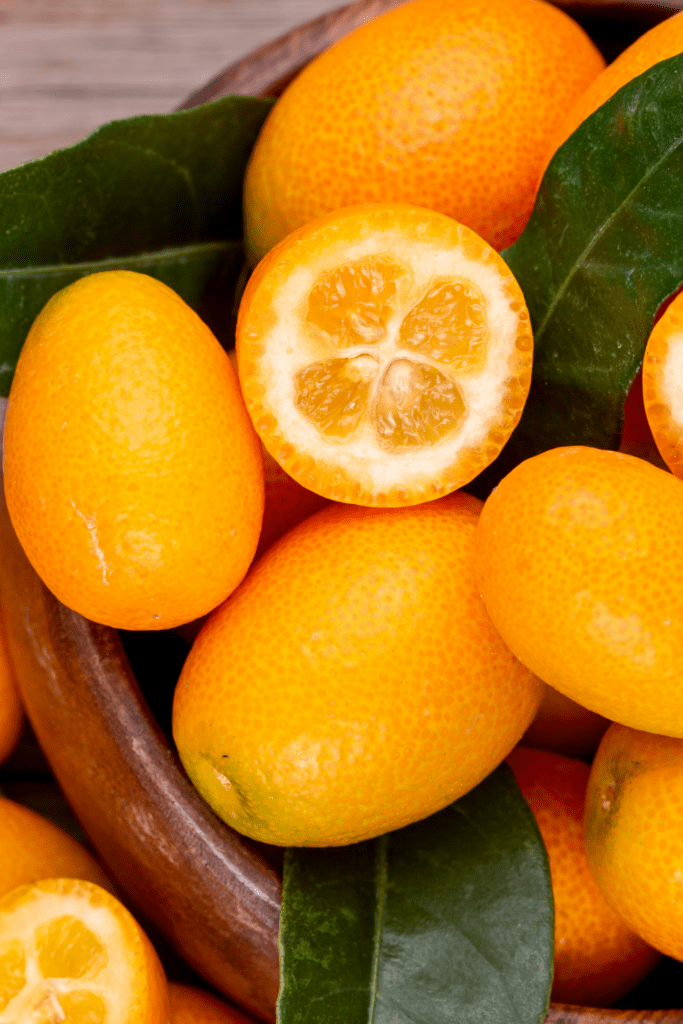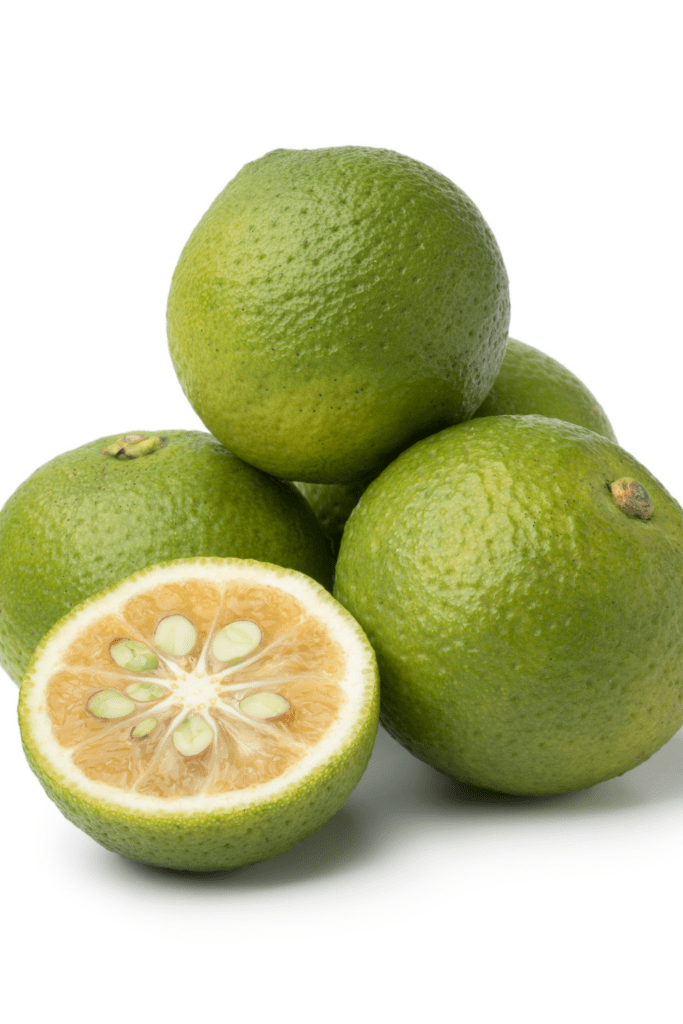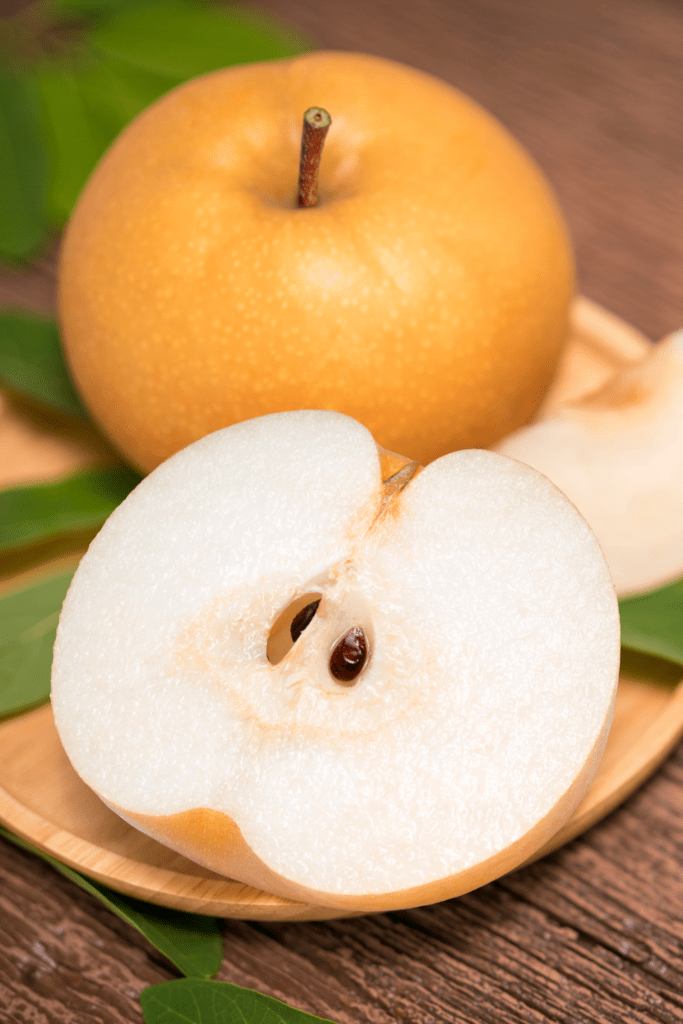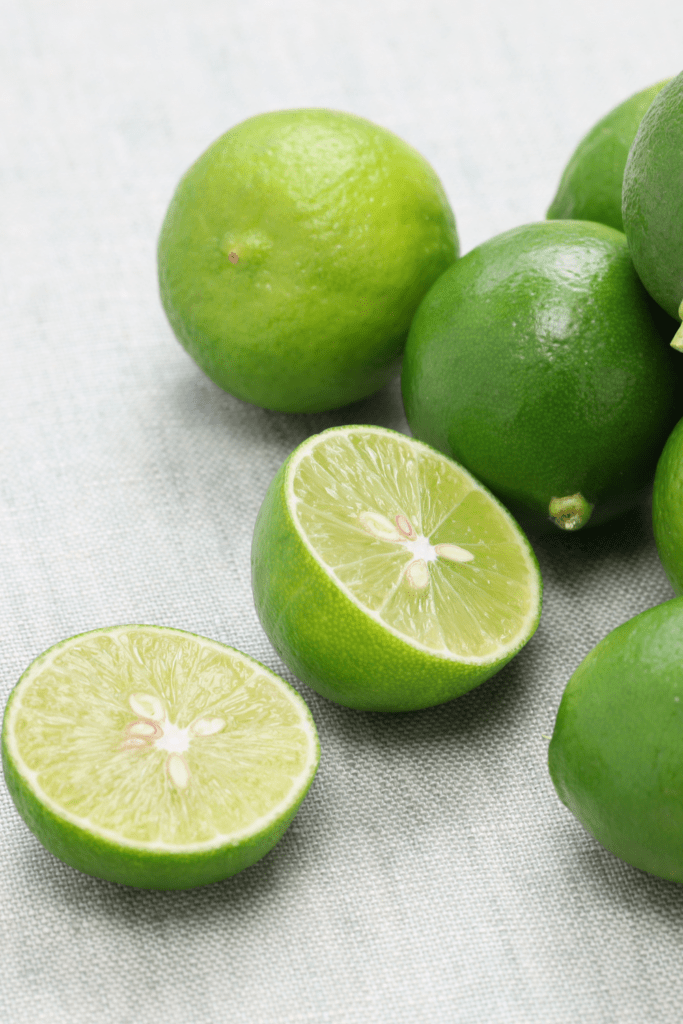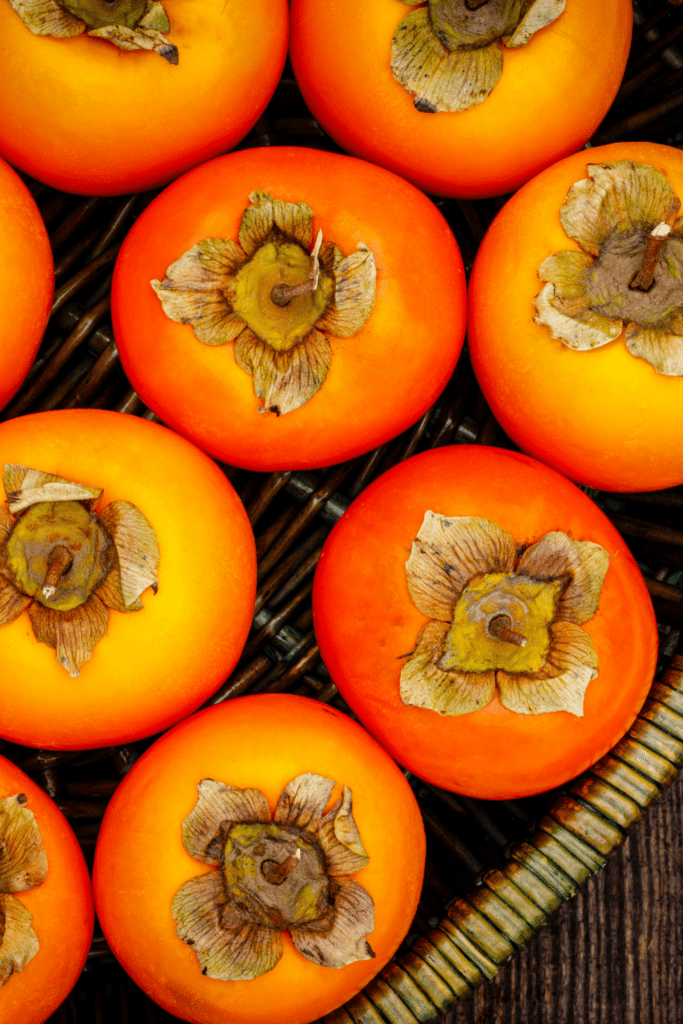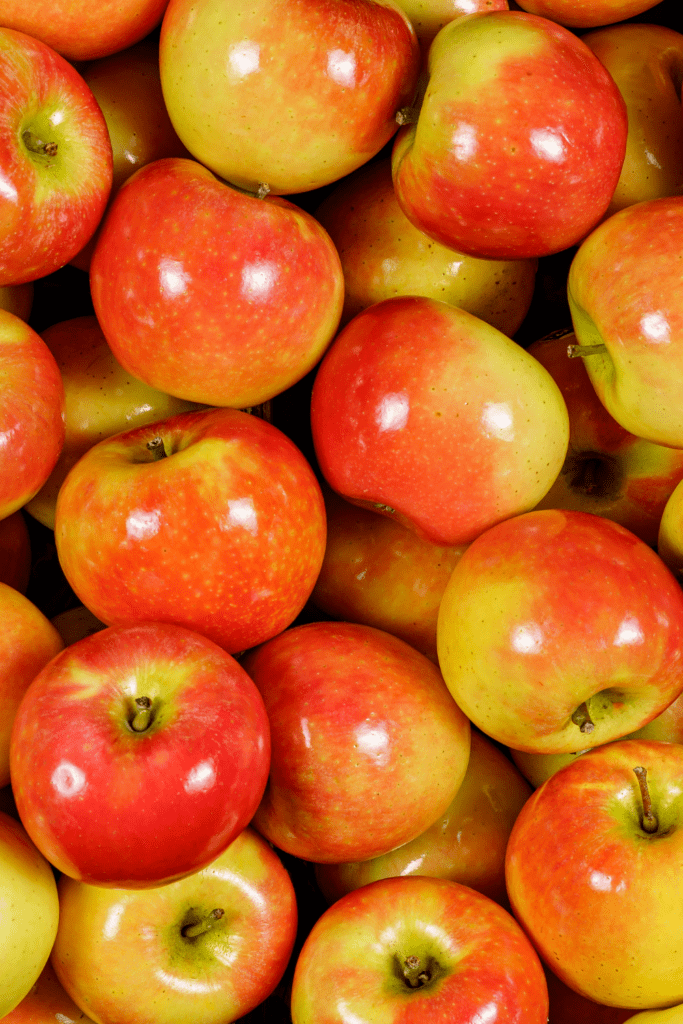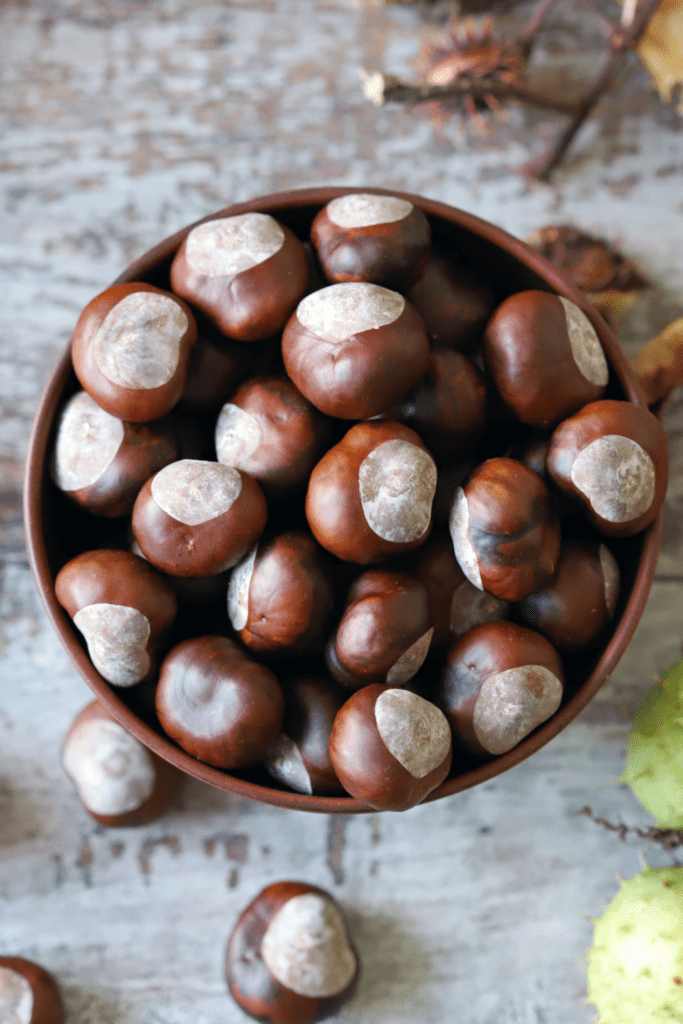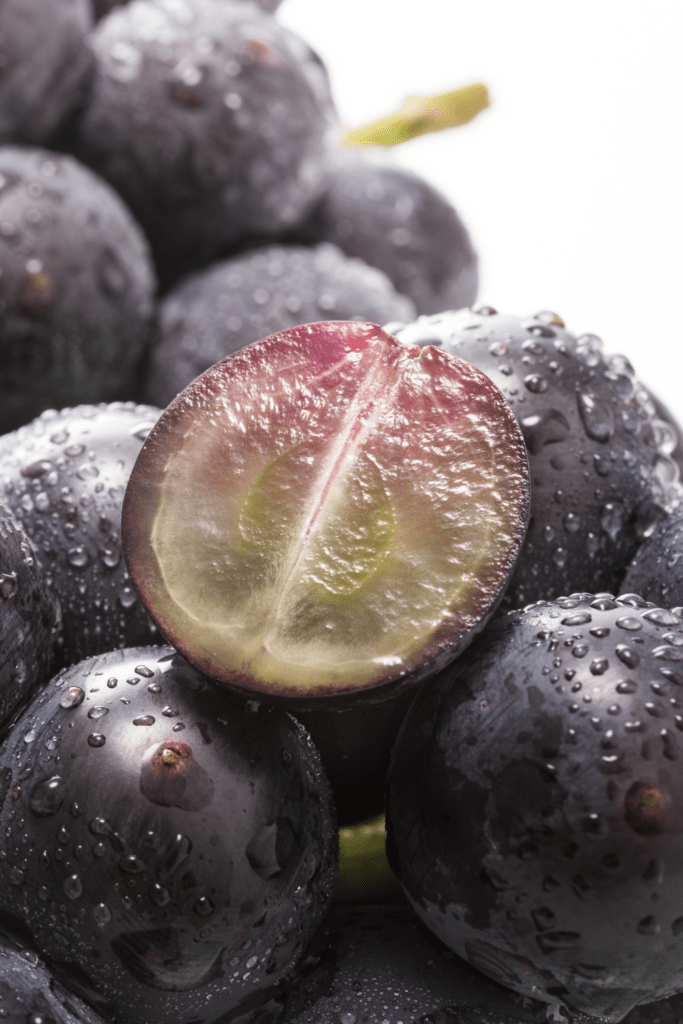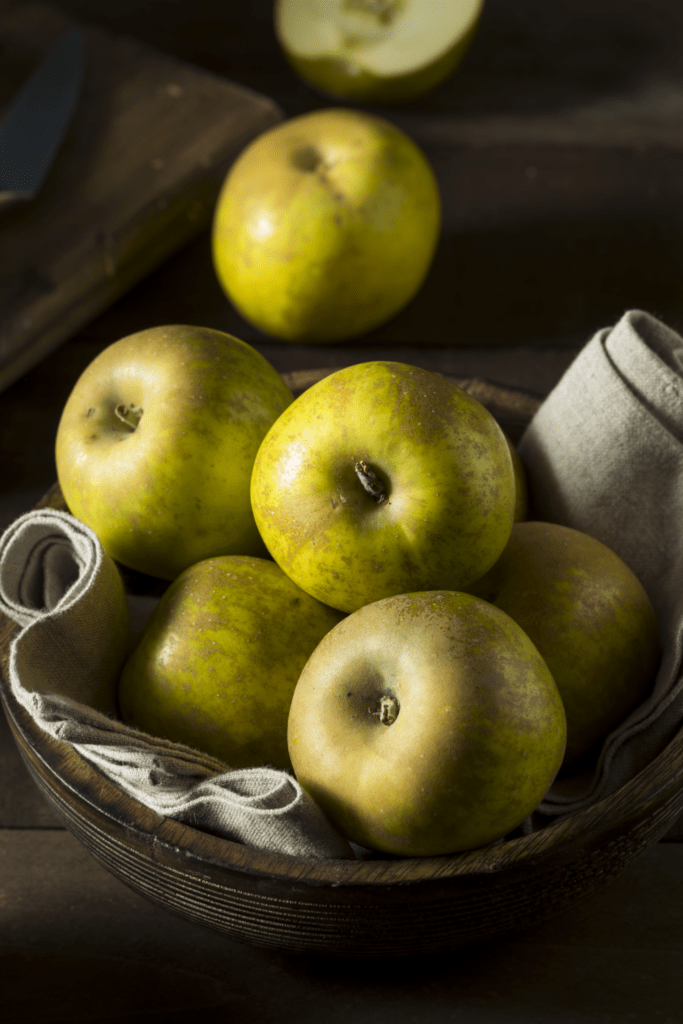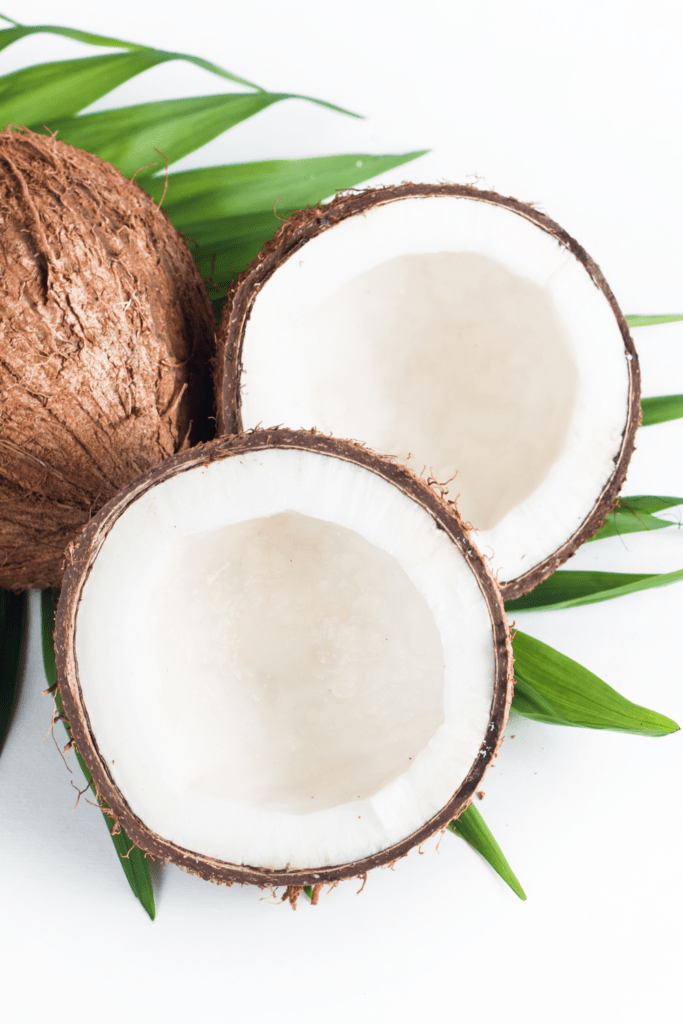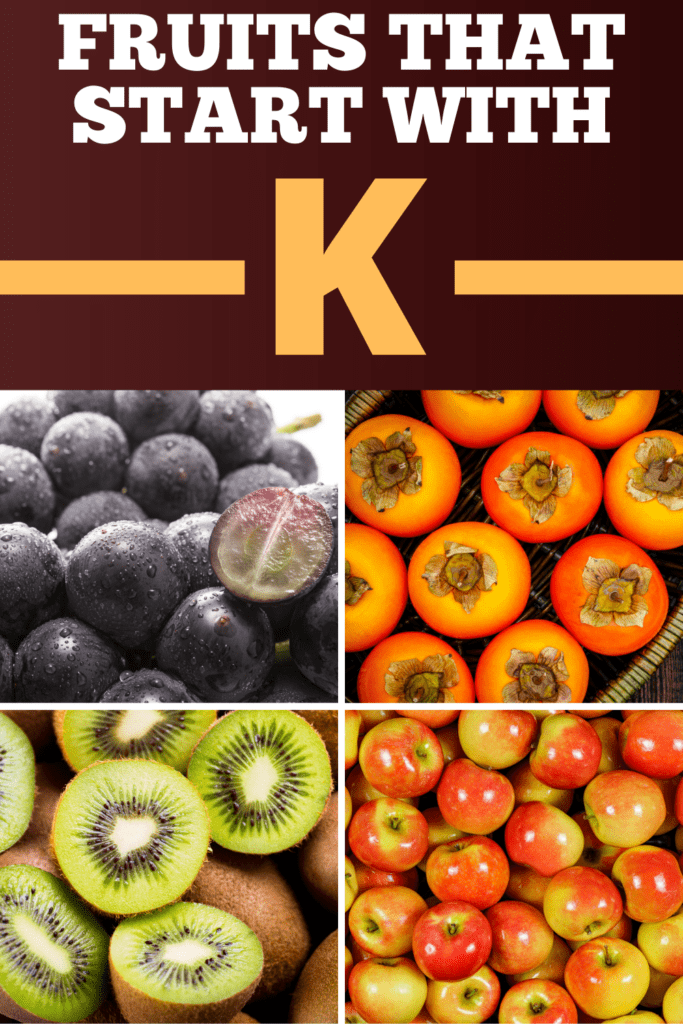If you’ve always wondered if key limes were real fruits or if you’d like to know more about what a kastanj or karonda is, keep reading! You might just discover some new favorites on this list!
1. Kaffir Lime
Kaffir limes aren’t often chosen for their tasty juice because they’re the least juicy of all the limes. In fact, although they’re edible, not many people eat them or use them as ingredients. Instead, they use these limes to make essential oils, massage oils, shampoos, and other skincare and haircare products because they have such a strong, pleasant scent.
2. Kiwi
Most people know that kiwis are small, oval-shaped brown fruits covered in fuzz with green insides. All that is true, but did you know there’s also a golden kiwi? It’s less fuzzy than its green counterpart, and the inside is a beautiful golden color that looks like the sun. Both kiwis are sweet and a little tart, with the golden ones being a little sweeter and more tropical in flavor than the green ones. Both are also very juicy.
3. Kumquat
Most people have heard of kumquats, but not many people I know have tried them. They’re part of the citrus family of fruits, and they resemble smaller, softer oranges. They taste more sour than sweet, but not in an overpowering way like lemons. You can enjoy them raw if you like sour fruits, eating them with or without peeling them. Many people also use them to make jam, jelly, chutney, or marmalade. There’s also a specific type of sweet liqueur people make from kumquats.
4. Kabosu
Kabosu fruits look like round limes when unripe and round lemons when ripe. The fruit’s flesh is pale yellow and contains tons of seeds. When eaten, kabosu fruits taste like a mixture between melons and lemons, and they have just a hint of mint thrown in for good measure. It’s an odd-flavored fruit, and it has a strong citrus scent. They’re native to Japan, but most people don’t eat them raw, preferring to use them to flavor sushi and other dishes instead.
5. Kakadu Plum
If you’re looking for a great source of vitamin C, look no further than the Kakadu plum. According to Healthline, it has the “highest recorded natural amount of vitamin C of any food in the world.” Three and a half ounces of the fruit contains 3,230% of your daily recommended dosage of vitamin C. It’s native to Australia, where it’s used as both food and medicine by the locals.
6. Koroī
Koroī berries come from a tall, coniferous tree in New Zealand called the Kahikatea tree. They’re orange with black seeds that grow from their tops. People often eat them raw, popping the seeds off the tops and sticking the whole sweet berry in their mouths.
7. Korean Pear
Korean, or Asian, pears have grown in popularity in Asia over the past decade and in the United States, Canada, and parts of Europe. They have a crispier outer skin than the varieties of pears we’re used to eating, and they’re also sweeter than most Anjou pears. People argue over the color of these pears, with some saying they’re brown and others calling them yellow. Either way, they’re delicious, not to mention high in minerals, vitamins, and other things that are good for you.
8. Key Lime
Key limes take their name from their native home in the Florida Keys. Key limes are rounder than regular limes, and when fully ripe, they turn yellow. They’re also juicier than green limes.
9. Kaki Persimmon
Kaki persimmons are also known as Japanese persimmons, and they look a little like orange tomatoes. Unripe kaki persimmons are bitter and foul-tasting, but ripe ones are delicious. They taste both spicy and sweet. In addition to eating them raw, people also dry them and eat them and use them in various recipes.
10. Kanzi Apple
Although they’re not yet well-known all over the United States, kanzi apples are one of the most delicious apple varieties there are. They’re bright red and yellow (picture a peach with the smooth skin of an apple), and they have plenty of juice. They’re more tart than sweet, and they have a delightfully crispy crunch. They’re one of the best apples for snacking or for salads.
11. Körsbär
Körsbär is the Swedish word for ‘cherry,’ so the next time you enjoy a sweet, red, candied cherry on top of your ice cream sundae. Just remember, if you were in Sweden, you’d be having a körsbär.
12. Kastanj
Plenty of people argue over whether or not kastanj – also known as chestnuts – are fruits or nuts. Technically, they’re fruits, despite their name. They’re small, brown, somewhat circular balls with hard outer shells. You’ll have to hull them before you eat them, but you can eat them raw, boiled, baked, or roasted.
13. Karonda
People often compare karonda berries with cranberries in terms of taste, but they don’t look much like cranberries. Depending on the specific variety and their current ripeness, the fruits may be green, white, pink, red, or deep purple. When eaten raw, karonda berries are sour and bitter. People often use them to make chutney, pies, and tarts. Others use them for pickling things, much as they would vinegar or brine. They’re high in iron and other vitamins and minerals, and they’re said to confer numerous health benefits on those who eat them.
14. Kvede
You may have never heard of a kvede, but chances are you’ve heard of a quince. That’s what a kvede is; they’re yellow-gold and similar in size and shape to apples. You can eat them raw, but they’re somewhat acetous, meaning they’re an acquired taste for most people. They work well as jellies and pie fillings, though.
15. Kyoho grapes
Kyoho grapes are similar in size, shape, and color to Concord grapes, although their color is darker, almost black. They were created in Japan and have been popular there ever since. They’re incredibly sweet, and they tend to be juicier than most grape varieties. They’re not the best grapes for people with diabetes or those on low-carb/low-sugar diets because of their high sugar content.
16. Keule Fruit
Keule fruits are small, oddly shaped yellow fruits that are about the size of an egg. They’re somewhat soft and sweet to eat. It’s safe to eat the fruit raw, but eating too much of it has been known to cause headaches. More often, people use the keule fruit to make a distinctive marmalade for which Chile is famous.
17. Kwai Muk
Kwai muk fruits are some of the ugliest, most unappetizing-looking fruits you’ll ever see. They’re related to jackfruits, but they’re nowhere near as large. You could easily fit two or three kwai muk fruits in one hand. The fruits don’t have a single, distinctive shape. Instead, they can be round, oblong, or something different and weird. They have velvety, orange-colored outer skins and are soft, squishy, and easily torn apart with your hands. Ripping them open feels a little like pulling a mushroom in half. It’s an odd but satisfying feeling. The insides are pink and fleshy. They’re somewhat sour, but not in a bad way. They’re tasty, and many people enjoy them raw.
18. Knobby Russet Apple
I’m sorry. Did I say kwai muks were the ugliest fruits I’d ever seen? How could I forget about knobby russet apples?! They’re pretty high up on the ugly list, as well. They have a greenish-brown skin that’s covered in bumps, warts, and knobs (hence the name) and that looks almost like it’s wilting or decaying. Trust me; the skin doesn’t look appetizing at all. Despite their appearance, though, these apples are pretty tasty. Underneath the skin, the edible flesh is a smooth, lovely ivory color, and it tastes fantastic. It’s not a traditional “apple” flavor. Instead, it balances the sweetness and the tartness and throws in a few nutty and spicy flavors, as well. It’s one of the more interesting, complex apple tastes.
19. Kokoneos
Kokoneos is the Korean word for ‘coconuts,’ and we all know what coconuts are. They’re those hard-shelled brown tropical fruits that we like to crack open and enjoy.
20. Keitt Mango
Keitt mangoes are one of the largest varieties of mangoes you can buy. They’re also lovely and bright green. They’re not a commonly available mango, and you can only find them – if you’re lucky enough to find them – at certain times throughout the year. They’re sweet, juicy, and have the perfect amount of tropical tanginess that makes them unlike other mango varieties. Because they’re green when ripe, you’ll have to squeeze them to tell if they’re ready to eat. Click on a star to rate it!
Average rating 5 / 5. Vote count: 4 No votes so far! Be the first to rate this post.
Share on social media: Let us improve this post!
